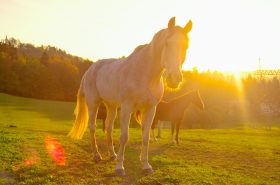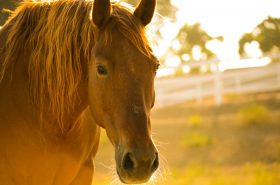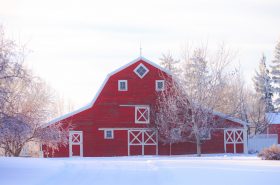Other than the obvious—their size—ponies and horses share some big differences.
When keeping both, understanding these differences is crucial, as it will impact how you manage your ponies compared to your horses. Here are some key differences between the two:
1.) Personality
Ponies tend to have a different personality than their larger counterparts. Often stoic and
intelligent, ponies can range from docile to somewhat wily. However, they are probably known
best for doing whatever they can to avoid work!
2.) Hair Coats
Ponies are better suited for cold climates than many horses because they tend to grow thick
hair coats that don’t shed until summer. They also have thicker manes and tails. Because of
this, ponies rarely need to be blanketed; however many ponies might need to be body-clipped in
the summer to help them stay cool.
3.) Strength
Pound per pound, ponies are stronger than full-sized horses. This is due to their stocky frame
and heavier-boned bodies. This makes ponies great for pulling carriages and carts.
4.) Digestion
Yes, ponies eat the same diet as horses, but they are extremely easy keepers and, therefore, it
can be easy to overfeed them. If left to their own devices, ponies can eat 4% of their body
weight or more in forage per day. Horses, on the other hand, will only eat up to 2.5% of their
body weight per day. A thin pony is rare and, in fact, may be suffering from a health problem.
5.) Laminitis Risk
Because of their tendency to be obese, ponies are more prone to developing laminitis, a
debilitating and sometimes life-threatening hoof disease. To help prevent this problem, ponies
often need to be kept in a dry lot (and fed low-sugar hay), only grazed at night when sugar
levels are lowest, and/or wear a grazing muzzle to restrict grass intake.
6.) Life Span
Another difference between ponies and horses is that ponies live longer. It’s not unusual for
them to be used for riding and driving well into their late twenties and live past thirty.
7.) Fencing Needs
Finally, ponies and horses have different fencing needs. Because ponies can be wily escape
artists, the right kind of fencing is important, especially if your pony is on the smaller side, such
as a Shetland breed.
Flexible fencing is the safest choice. Ramm’s Flex Fence comes in a variety of options and
provides a safe, durable, low-maintenance barrier. Fortunately, this type of fencing also works
great for large breeds.
Just keep in mind that when installing flexible fencing for smaller-sized ponies, you should set
the bottom rail no more than six inches from the ground. Likewise, rails should be no more than
six inches apart, and the overall height should reach at least four feet.



